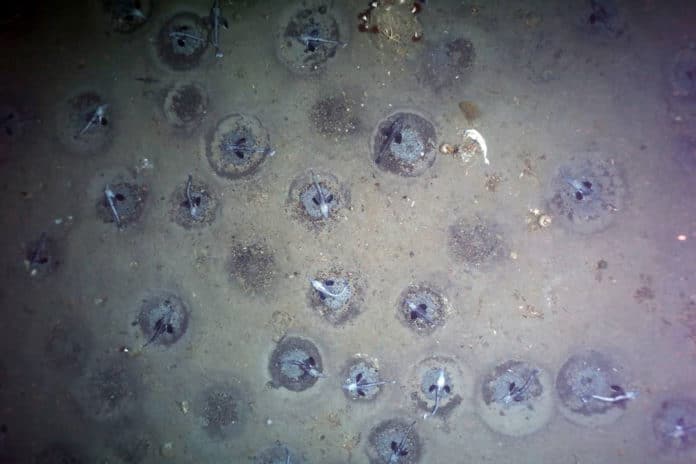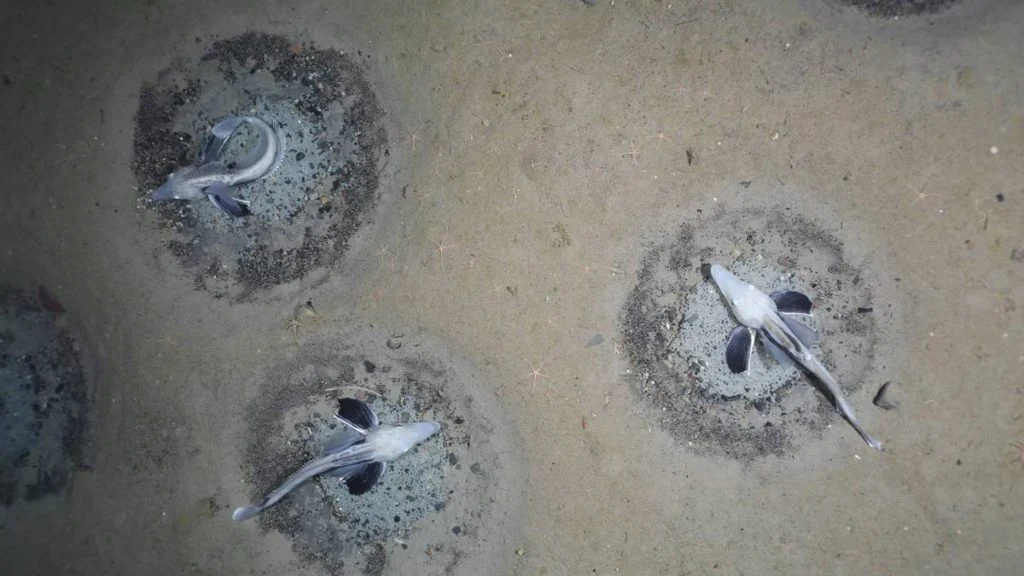A team of scientists has identified the world’s largest fish breeding habitat near the Filchner Ice Shelf in the southern Antarctic Weddell Sea using a towed camera system. They photographed and filmed many nests of Neopagetopsis icefish.
What is special about icefish? Icefish are an extremely rare kind of fish found in Antarctica. Icefish are uniquely designed to enable them to survive in the Southern Ocean's ice-covered waters at temperatures that would freeze the blood of other fish. They lack a swim bladder and spend most of their life close to the ocean floor. To assist them in surviving in such cold waters, they contain antifreeze proteins in their blood and bodies that prevent their cells from freezing. Because Antarctic waters have a high concentration of oxygen, ice fish may survive with fewer levels of hemoglobin, the protein that transports oxygen to the body cells. Instead, they have a higher concentration of clear blood, which gives them an extraordinarily ghostly white color.
The one-of-a-kind observations were made using an OFOBS, or Ocean Floor Observation and Bathymetry System, a camera system designed to examine the seafloor in severe settings such as ice-covered oceans. The camera was towed by scientists on a customized fiber-optic and power line at a speed of approximately half to one knot, approximately one and a half meters above the seafloor.
In February 2021, while exploring the seafloor with this camera system, the team aboard the research vessel Polarstern discovered the mind-bogglingly large icefish reproductive colony. Numerous fish nests were visible in the photographs. Additionally, the researchers discovered an average of one breeding site every three square meters, with one to two active nests per square meter.
Will you offer us a hand? Every gift, regardless of size, fuels our future.
Your critical contribution enables us to maintain our independence from shareholders or wealthy owners, allowing us to keep up reporting without bias. It means we can continue to make Jewish Business News available to everyone.
You can support us for as little as $1 via PayPal at office@jewishbusinessnews.com.
Thank you.
Scientists estimate that there are approximately 60 million fish nests in total. Round, 15 centimeters deep, and 75 centimeters in circumference, the nests are.
“The thought that such a large breeding area of icefish in the Weddell Sea was previously unknown is exciting,” said Autun Purser, a deep-sea biologist at the Alfred Wegener Institute, Helmholtz Centre for Polar and Marine Research (AWI) and lead author of the current study.
“Following the remarkable finding of the numerous fish nests, we discussed a strategy on board to determine the extent of the breeding region – there was no end in sight. The nests are three-quarters of a meter in diameter – significantly larger than the structures and organisms, some as small as millimeters in size, that the OFOBS system routinely detects.”
“We photographed and videotaped an area of 45,600 square meters and tallied an astonishing 16,160 fish nests.”
The scientists identified different types of fish nests: “active” nests holding between 1,500 and 2,500 eggs and guarded in three-quarters of cases by an adult icefish of the species Neopagetopsis ionah; and “inactive” nests containing only eggs.
When paired with oceanographic and biological data, the results indicated that the breeding area spatially corresponded to the input of warmer deep water from the Weddell Sea onto the higher shelf. Additional investigation found that the location is a favored Weddell seal habitat. Additionally, scientists estimate that the ice fish colony there has a biomass of 60 thousand tonnes.
Prof. Antje Boetius, director of AWI and a deep-sea biologist, stated, “The latest study demonstrates how critical it is to develop marine protected zones in Antarctica. This extraordinary discovery was made possible by a unique under-ice survey tool developed during my ERC grant.”





